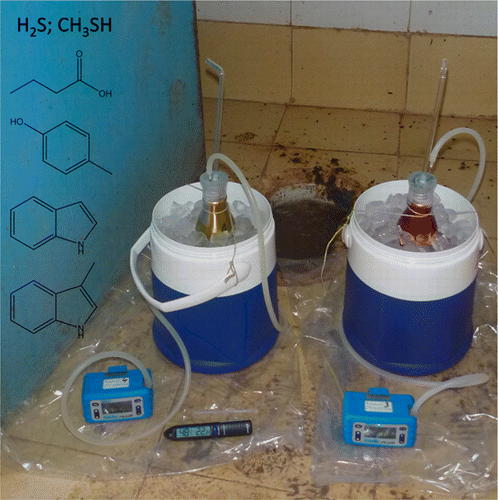Perfume researchers lend their noses to design less odorous latrines

About 2.5 billion people worldwide don't have access to sanitary toilets. Latrines are an option for many of those people, but these facilities' overwhelming odors can deter users, who then defecate outdoors instead. To improve this situation, fragrance scientists paired experts' noses and analytical instruments to determine the odor profiles of latrines with the aim of countering the offensive stench. Their report appears in the ACS journal Environmental Science & Technology.
Poor sanitation, including open defecation, is a major public health issue in many low-income regions. If not contained within a functioning sanitation system, fecal matter can run off into nearby rivers and streams, contaminating drinking water. This in turn can cause health conditions such as childhood diarrhea, which can lead to death in places with inadequate care. Encouraging use of latrines could go a long way toward reducing the risk of illness, but these facilities can be smelly. So, Christian Starkenmann and colleagues at the "fragrance and flavor house" Firmenich brought their scent expertise to bear on the problem.
The scientists figured out an accurate way to identify and quantify the odor-causing compounds present in latrines' "headspace," the air enclosed in these structures. In facilities in India, Kenya and South Africa, the compounds their instruments identified as the most concentrated were responsible for the dominant odors, which the scientists verified by smelling. They say understanding these sensory profiles is critical to countering the odor of sanitation systems and making them more welcoming.
More information: Quantitative Headspace Analysis of Selected Odorants from Latrines in Africa and India, Environ. Sci. Technol., 2015, 49 (10), pp 6134–6140. DOI: 10.1021/acs.est.5b00692
Abstract
This analytical investigation focuses on the quantification of odorant molecules in the headspace of latrines. Hydrogen sulfide and methyl mercaptan were derivatized under a more stable N-ethyl maleimide conjugate. Since the amount of odorant molecules is very low in the gas phase, we developed a method that had two steps of concentration. The first step consisted of the accumulation of volatiles in buffered water by bubbling 350 L of air in a bottle. The second step consisted of loading the water on a 1 g solid-phase extraction cartridge, shipping it to our laboratories, and desorbing with Et2O, which achieved a total concentration factor of 3.5 × 106. The acidification of the water phase gave us access to the acids, and an additional bottle containing an acidic ion-exchange resin gave us access to trimethyl amine. The limits of quantification in the gas phase were 8.7 × 10–4 μg/L air for hydrogen sulfide, 1 × 10–4 μg/L air for methyl mercaptan, 1 × 10–3 μg/L air for butyric acid, 1 × 10–4 μg/L air for p-cresol, 1 × 10–5 μg/L air for indole, and 1 × 10–5 μg/L air for skatole. The system was calibrated by using olfactometers, which can deliver a precisely known quantity of volatiles into the air. We were able to quantify all compounds near their odor detection thresholds (ODTs). All ODTs were measured in our laboratory with the same olfactometry method. This allowed accurate and comparable ODT values for malodorant compounds from toilets.
Journal information: Environmental Science & Technology
Provided by American Chemical Society

















